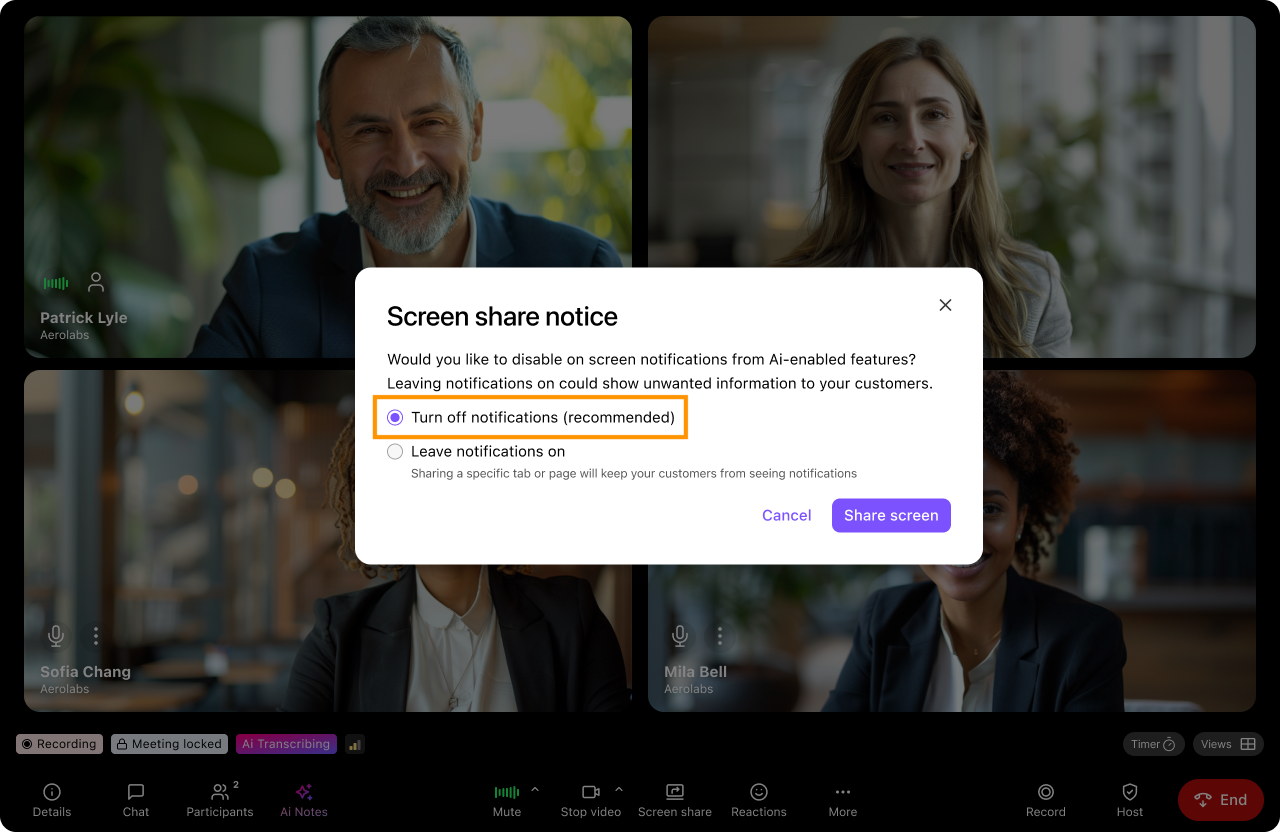Real-time Assist cards provide triggered pop-ups that guide contact center agents through speaking points, workflows, best practices, and more. Real-Time Assist (RTA) cards help onboard new agents and guide even the most seasoned sales rep through tricky conversations. Not only that, they offer incomparable insights on agent knowledge, creating unlimited coaching topics and increased visibility to improvement opportunities.
Let's dive into the details.
Who can use this
Dialpad offers a variety of plans and add-ons to match your exact business needs. Features do differ by plan, please check your plan details to see if you can access Real-Time Assist cards, and head to our pricing page to learn about more options.
Check here to see which Ai language options are available in your country.
Language availability
RTA cards are available in English, Spanish, and French.
For use in English, make sure that your Contact Center language is set to English before creating your cards.
For use in Spanish, make sure that your Contact Center language is set to Spanish before creating your cards.
For use in French, make sure that your Contact Center language is set to French before creating your cards.
Note
RTA cards created in a Spanish-language contact center won't work in an English-language contact center, and vice versa.
However, Spanish RTA cards can still trigger if a Spanish trigger word is detected in mixed-language conversations. The same applies to English RTA cards in an English contact center.
Create a Real-Time Assist card
To create a Real Time Assist (RTA) card, head to your Dialpad Admin Settings.
Navigate to Contact Centers
Select the desired Contact Center
Navigate to Dialpad Ai
Select Real Time Assist Cards
Select Create new Real Time Assist Card
Next, you have the option to use one of our templated Real Time Assist cards, or to create one from scratch.
If you choose to create your own, simply fill in the blanks (you'll need to name the card, define the trigger keywords and agent response).
Each RTA requires the following details:
Name
Title of your RTA card
Language
Select your desired language (English, Spanish, and French).
All existing RTA cards are set to English by default.
Description
What is this card for?
Card Content
What information, links, or answers would you like your agents to see when this card is triggered?
Trigger words/phrases
What words and/or phrases will trigger this card?
Will the trigger phrases apply to anyone on the call, just the rep, or just the customer?
Once you add a trigger phrase, the number of calls it’s triggered on in the last week will show up in brackets (ex (7)). This is useful for understanding how useful the trigger phrase will be.
Assigned Groups
Which agents’ calls should trigger this moment or card? You can add multiple Contact Centers or Coaching Teams.
Learn more
Don't forget to check out our Best Practices Guide for more information on getting the most out of RTA Cards.
Edit Real Time Assist card
Real Time Assist (RTA) cards can be edited at any time.
To edit an RTA card, head to your Dialpad Admin Settings.
- Navigate to Contact Centers
- Select the desired Contact Center
- Navigate to Dialpad Ai
- Select Real Time Assist cards
- Select Options beside the RTA card you'd like to delete (that's the 3 vertical dots)
- Select Edit
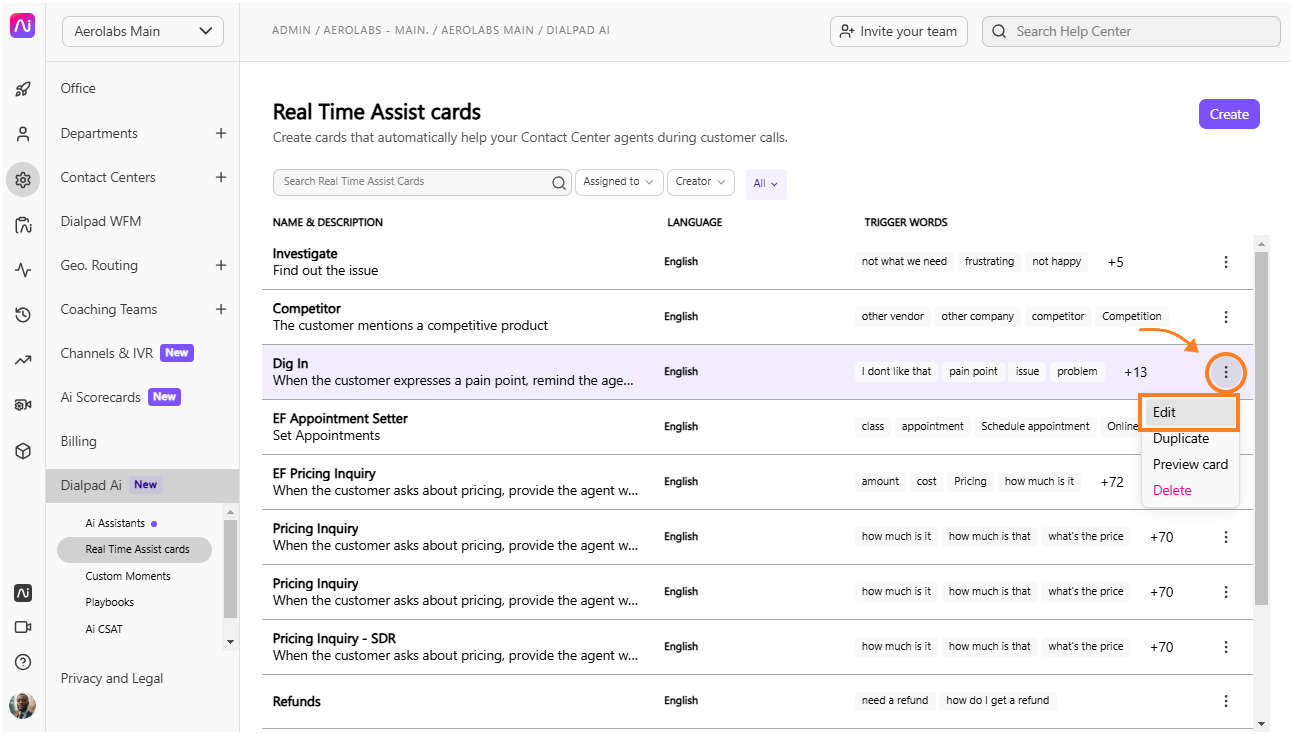
- Make the desired change
- Select Save
Once an RTA card is assigned to a group, it can be edited from either the Dialpad Ai Admin page or the group’s Ai settings.
Note
Once an RTA card is created, the language can’t be changed.
Duplicate Real Time Assist card
To duplicate a Real Time Assist card, go to your Dialpad Admin Settings.
Navigate to Contact Centers
Select the desired Contact Center
Navigate to Dialpad Ai
Select Real Time Assist Cards
Select Options beside the RTA card you'd like to delete
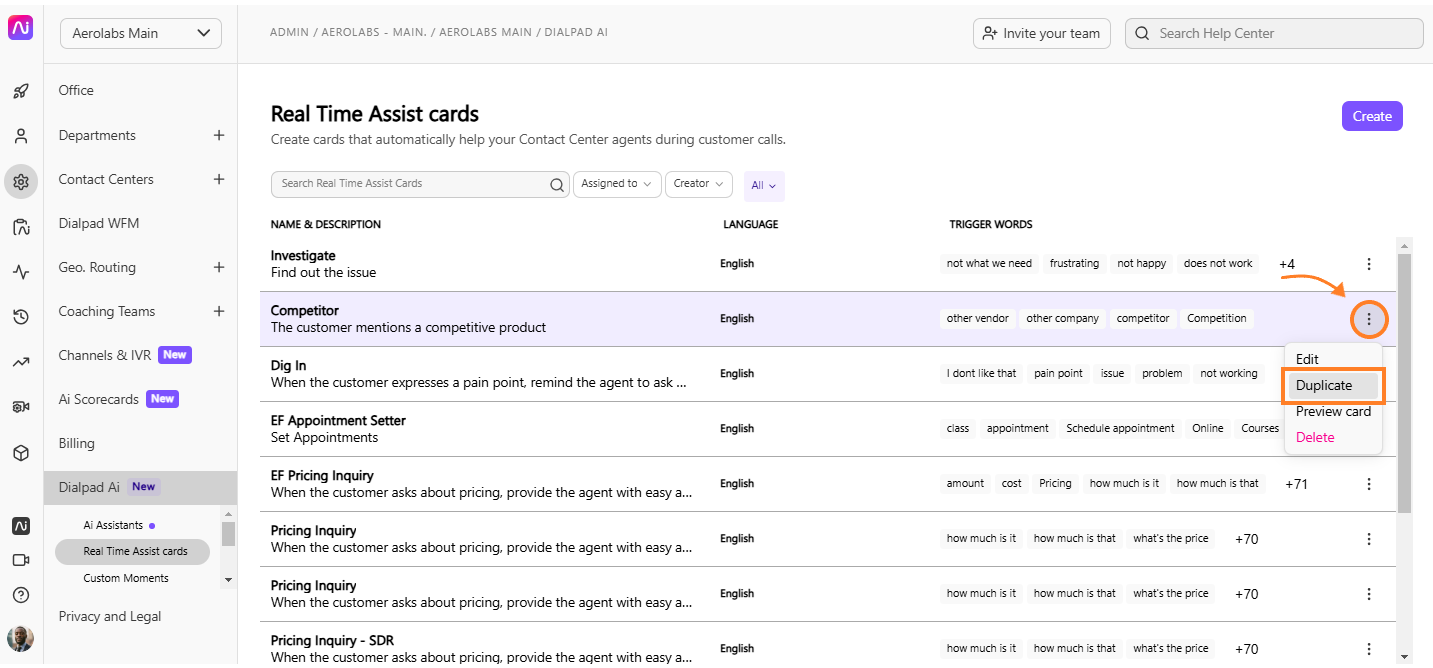
Select Duplicate
Make the desired changes
Select Create Card
Delete Real Time Assist card
Real Time Assist Cards can be deleted at any time.
Deleting a Real Time Assist (RTA) card will remove it from all groups using the card. Previous call details and summaries will not be affected.
To delete an RTA card, head to your Dialpad Admin Settings.
- Navigate to Contact Centers
- Select the desired Contact Center
- Navigate to Dialpad Ai
- Select Real Time Assist Cards
- Select Options beside the RTA card you'd like to delete (that's the 3 vertical dots)
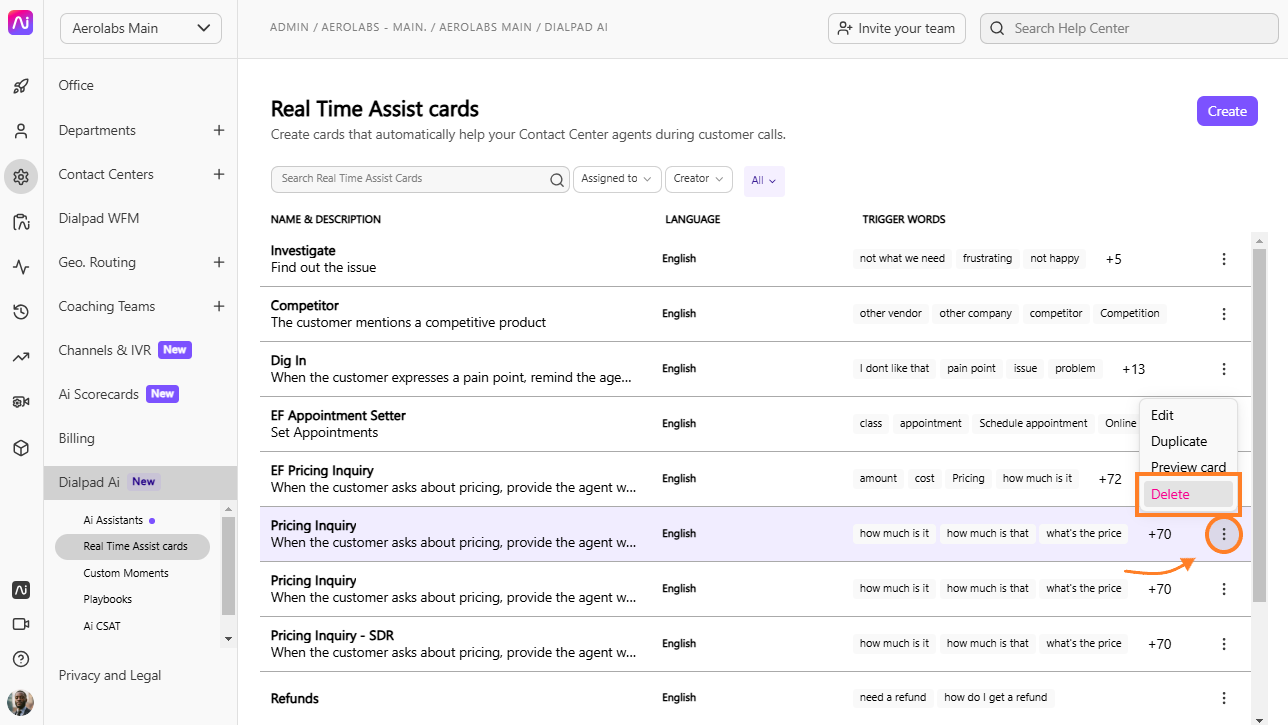
- Select Delete
- Confirm by selecting Yes, Delete
Real-Time Assist Cards in Dialpad Meetings
Requirements
Real-Time Assist Cards for Dialpad Meetings is currently in an Early Adopter Program. Please contact your Customer Success Manager if you want to try this feature.
You must be on a Dialpad Support or Dialpad Sell plan to use RTA cards with Dialpad Meetings. This feature is not available to standalone Dialpad Meetings users.
Real-Time Assist Cards for Dialpad Meetings are available in external meetings and can only be used in English.
To use Real-Time Assist Cards in Dialpad Meetings:
Make sure Dialpad Ai is turned on
Mark the meeting as external
Choose which group you want to assign the meeting to
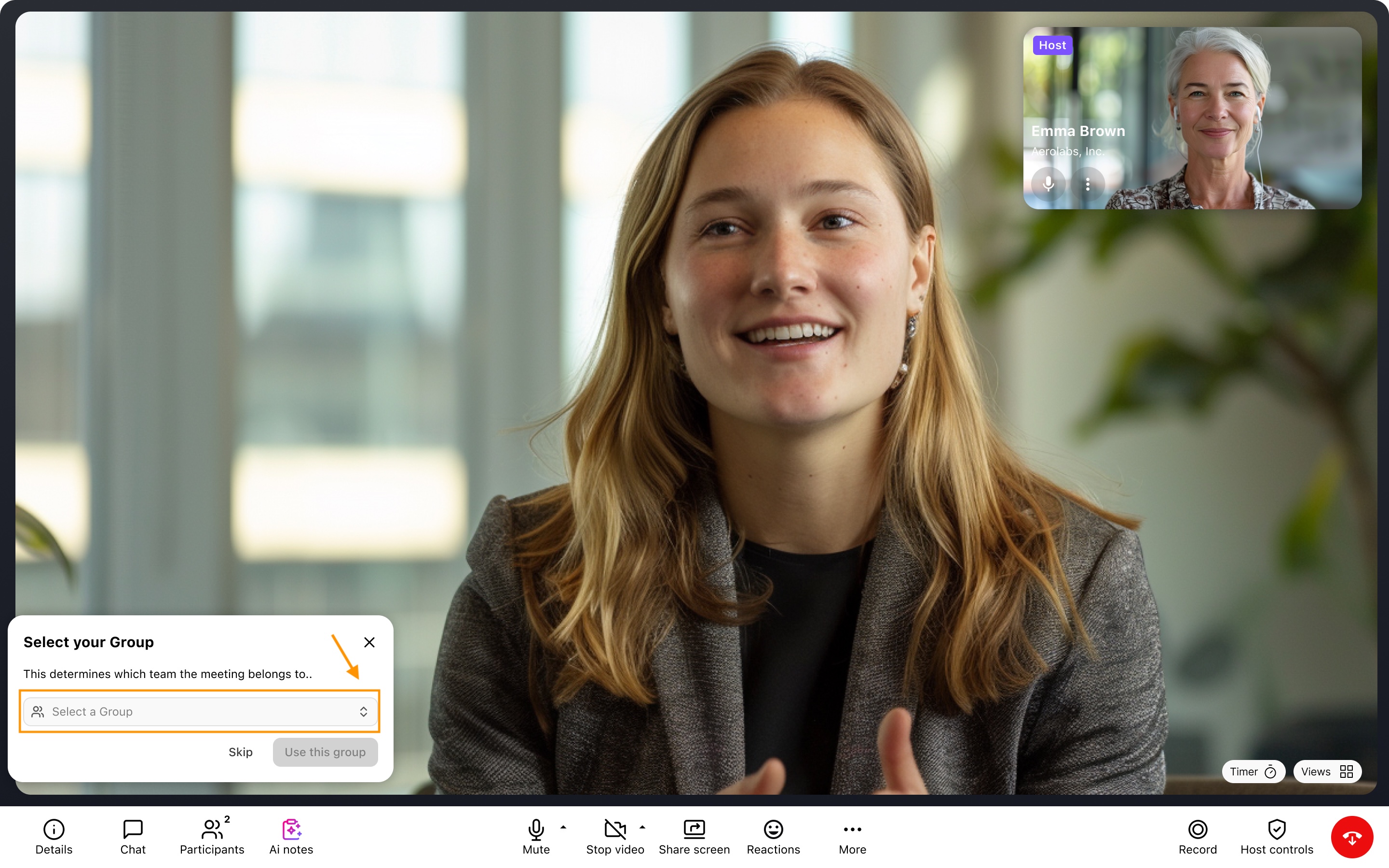
When an RTA is triggered, you’ll see a notification on the right side of your screen
.png)
Select the notification
Select the RTA card that appears in the Live Coach tab
You can also access the Live Coach section at any time by selecting Ai Notes.
.png)
Note
Ai Notifications, which display your RTA cards, are visible to all users when screen sharing. We recommend turning them off before your share your screen—you’ll be prompted to set your preference before your share your screen for the first time.
Analytics and call review
Once you’ve created an RTA card, you’ll be able to see it in action the same way you can with our other pre-existing moments.
Once the card has been triggered on a call, it will appear in the Moments section of the Call Review, as well as in the Moment Filter in your Conversation History and Analytics.
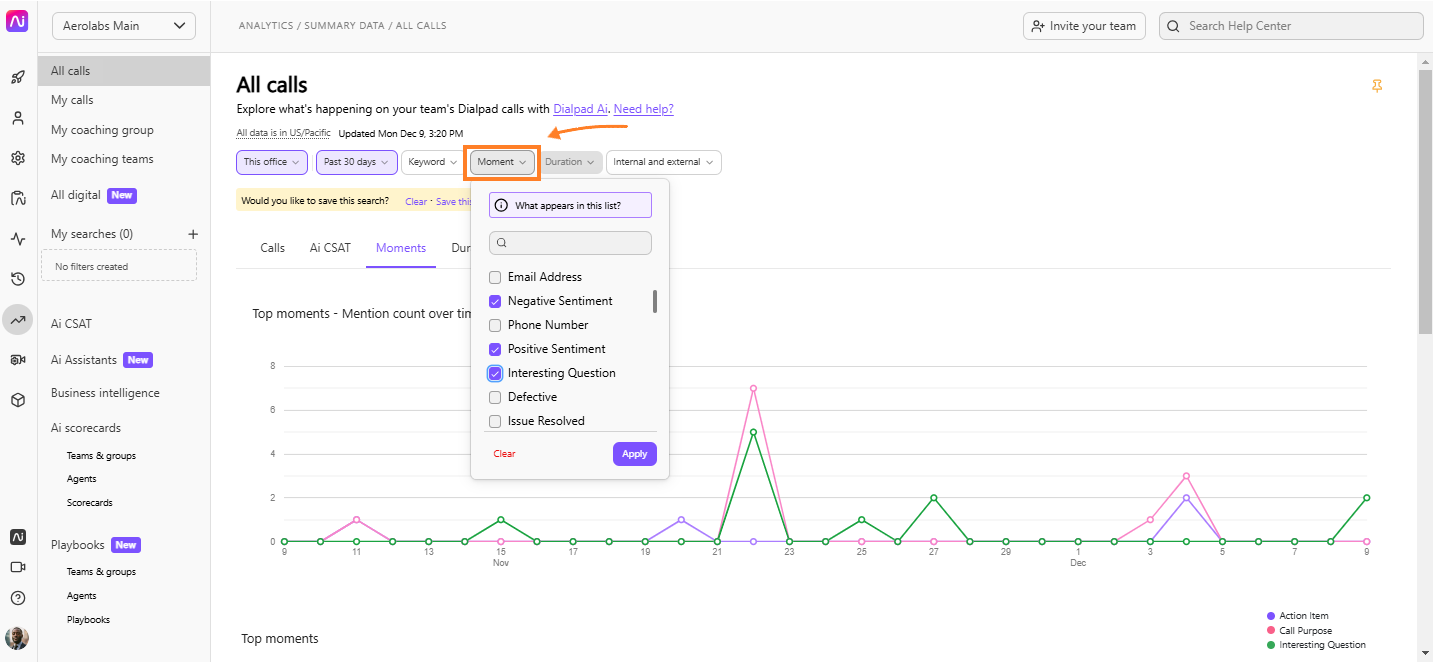
Note
If a trigger word is mentioned twice on a call, the card will only pop up the first time the word is mentioned. We still keep track of additional instances where the key phrase occurs, and they’re visible in the call review/analytics.
